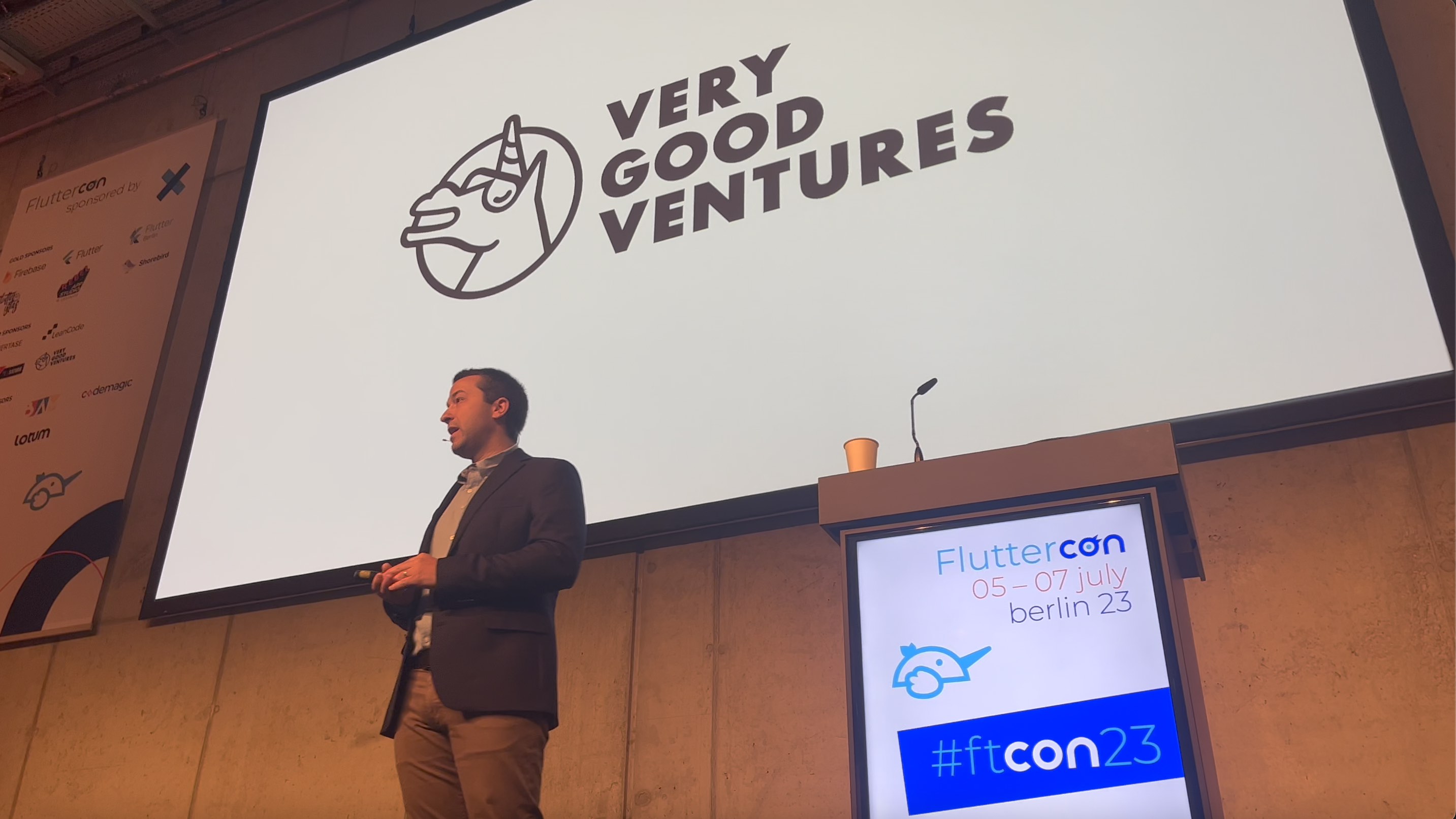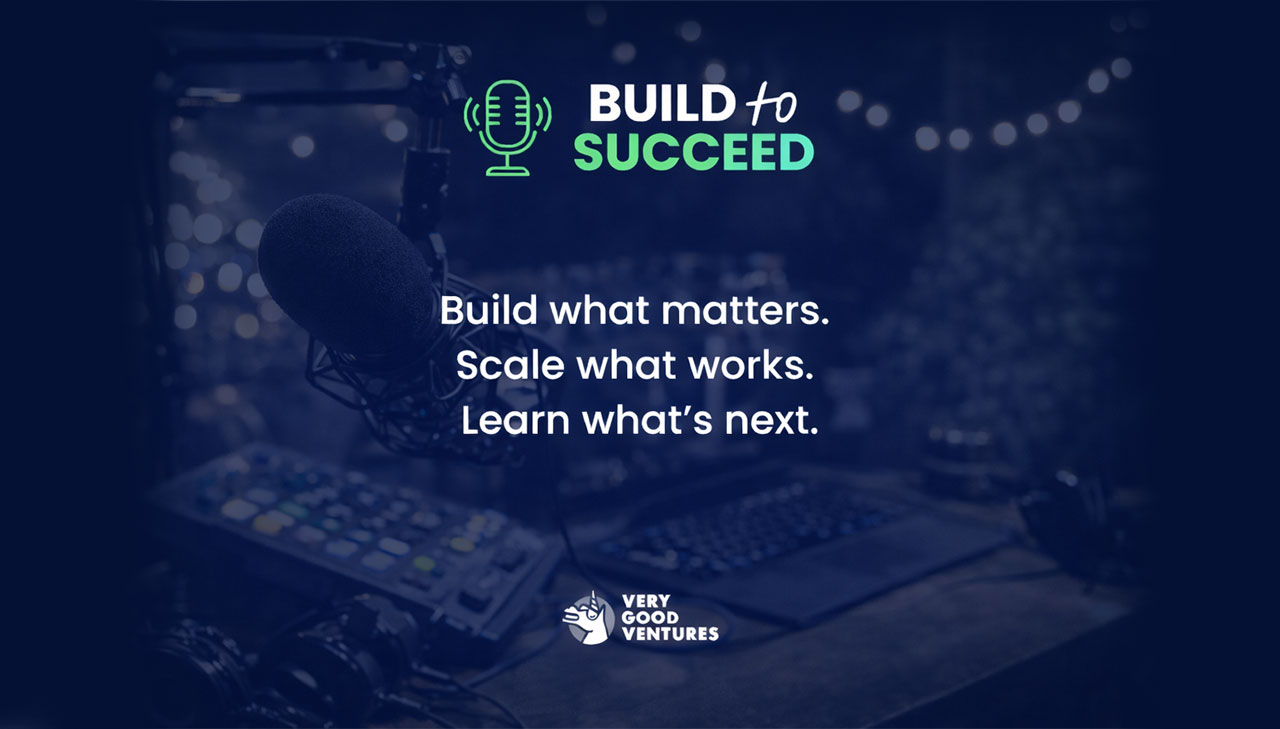Flutter Can Transform Engineering Team Culture
Technology and Culture: Flutter's Opportunity to Impact Organizations

In the constantly evolving world of software development, the significance of building team culture often takes a back seat to creating technological innovation and building product features.
This is a topic that, as the Founder and CEO of Very Good Ventures (VGV), I emphasized during my talk at Fluttercon '23 in Berlin, Germany, explaining why technology team culture is a significant factor in shaping the success and expansion of organizations — and how Flutter creates an opportunity for change.

In this article, I will delve into the insights I shared during the talk and explore how Flutter, the leading open-source UI software development toolkit, can be the catalyst that transforms team cultures and creates better outcomes.
The Role of Culture in Organizations
To understand how culture impacts teams and organizations, we must initially comprehend the essence of culture itself. To do so, I have been conducting research and talking with different professionals, partners, and business colleagues to have a better understanding of it.
For instance, Ben Horowitz1 defines a company’s culture as “The collective behavior of everyone in the organization, what people do when they’re not giving them a direction, and the organization’s way of doing things.”
In simpler terms, culture is how people within a company collaborate, interact, and collectively pursue their goals, and it is enormously important. Culture significantly impacts an organization's performance, and employee satisfaction. The right culture can boost productivity, innovation, and morale, while the wrong culture can lead to employee turnover and hinder growth.
“Culture can be one of the biggest multipliers to a team's performance across the board.” according to Christopher Gulliver, former Director of Engineering at Slickdeals and CEO & Founder at Lonch.
Following these definitions, it's essential for all organizations to remember that an investment in culture and how a team performs can lead to real business results and revenue growth.
Research from the MIT Sloan Management Review2 indicates that nearly two-thirds of employees regard corporate culture as one of the most significant reasons for staying with their current employer. Moreover, Forbes3 reports that companies with robust cultures experience a staggering fourfold increase in revenue growth.
So what opportunities exist for specific technologies, such as Flutter, to positively impact this crucial area?
Flutter and Culture: Discovering a new catalyst
You might be wondering: How does Flutter, a toolkit for building multi platform apps and user interfaces, relate to nurturing a healthy organizational culture?
At VGV, we’ve found an exciting connection: While Flutter is renowned for its efficiency and capacity to craft cross-platform apps from a single codebase, it tends to have a less often discussed yet profound impact on team cultures.
Based on my own observations at VGV and experiences across a vast array of client programs, working with Flutter tends to build great team cultures — Flutter teams just seem to be happier. There’s something about the developer experience that is better and less frustrating. Flutter also helps transform team culture by bringing teams more closely together. This is a hugely important value of adopting Flutter. At VGV, we got into Flutter because it was just better and easier to build with it, but it ended up having a vast impact on our team culture.

Before going any further, I need to be precise — Flutter doesn’t create a great culture all by itself. Technology can’t make a great culture — it’s the people that create it. As a team, we create a culture by being who we are and by how we collaborate with each other. But Flutter - and really any technology - can play a central role by affecting how a team does its job.
I’ve found five ways Flutter is a catalyst for team culture. There are probably more, and these catalysts are not exclusive to Flutter, but the key is that these catalysts exist. Leaders who can take advantage of these catalysts can reap rewards far beyond the benefits of the technology.
1. Creating “The Opportunity” for Cultural Transformation:
Flutter creates the opportunity for cultural change. There’s nothing uniquely specific about Flutter here other than the fact that it's often part of a transformative moment for a team.
Flutter projects are generally brand-new products or a product re-platforming; teams are starting over, re-booting something, or investing in something new. This creates a reset moment, an opportunity to interrogate the culture, see how you are performing, your processes, your behavior as a team, etc. A new Flutter initiative represents a chance to seize the opportunity and invest the energy to reboot your culture.
Keller Williams, the largest real estate franchise in the USA, is a great example. They had a consumer app, where code was becoming a challenge, getting disorganized, hard to maintain, and did not have a lot of test automation. They wanted to improve their codebase and their app, but their team culture. Flutter presented the opportunity:
“We decided that the opportunity to break old habits — among Flutter’s other benefits — was a compelling reason to switch.” Chris Synan, VP Engineering, KW Consumer Engineering.
Flutter provided an opening for them to invest in redefining the team culture. They made a concerted effort to focus as much on improving how they work as the code they were improving. As part of the transition to Flutter, they gained a better-shared understanding of their codebase and how they could contribute to it effectively. That helped them have better awareness, clearer expectations, and better visibility into how long it would take to do things.
Since then, “The team's culture has changed dramatically. The levels of pride and confidence have grown considerably.”, Chris said.
2. Redefining Developer Identity:
Developers often identify themselves by the type of technology they work with. For instance, you may be an iOS developer, Android developer, or JavaScript developer. Since developers working with Flutter can build for almost any platform, Flutter dissolves these technology and platform partitions. Flutter allows developers to concentrate on their value rather than the tools they employ. This shift, from being pigeonholed by technology to being recognized as "Product Engineers," fosters team unity and cultivates a shared sense of purpose.
Agtonomy is another company that has invested heavily in Flutter as a strategic capability. They are a company specializing in autonomous tractors and they picked Flutter for their full ecosystem of apps as well as using Dart for the backend. As a result of uniting the whole software stack: “We’re able to share code across apps, collaborate better, and make decisions faster since it’s all Flutter & Dart.” David Chen, Head of Software Services at Agtonomy. Their team can share and collaborate in a way that typically is not the norm. They’re not compartmentalized by platform, device, language, platform, etc.
“Our people and skills are portable. Anyone can jump into any part of the ecosystem to improve the product. We don’t see ourselves as engineers specific to a single platform — we see ourselves as ‘Product Engineers.’” David mentioned.
The Agtonomy team is just focused on building the product. They want to create the best outcome for the product and its customers. They are not focused on the platform, the language, or technical distinctions. This is one of the things Flutter does: Eliminates the barriers between team identities to realign the value the collective team is creating, which in turn strengthens the team culture.
3. Enhanced Cross-functional Collaboration:
Flutter promotes more effective collaboration across cross-functional teams. Traditional software development often engenders intricate and complex communication pathways with numerous teams and stakeholders, leading to delays and inefficiencies. Flutter streamlines these interactions by simply reducing the number of nodes in the communication network, rendering it more straightforward for teams to collaborate seamlessly.
Realtor.com's4 mobile team found themselves reorganizing around domain teams after adopting Flutter. This restructuring eradicated bottlenecks and enhanced communication with stakeholders. It stands as evidence of how Flutter's developmental approach augments collaboration and can extend its influence beyond the codebase into the very fabric of the organization itself. Flutter changed how the organization is designed.
Before Flutter, the Realtor.com mobile team was organized by platform, meaning iOS and Android, existing a brick wall right down the middle. Because of this separation, it became hard to scale: There were divergences in features and UI, different patterns, and they were solving the same problem multiple times, among other issues. By adopting Flutter and embracing the single codebase multi-platform paradigm, they could reorganize how their team was structured. So rather than organize by platform, they've dedicated themselves to specific features, uniting the teams and bringing them together by eliminating (now) arbitrary barriers.
The exciting part is that Flutter’s true multi-platform nature — reaching far more than just two platforms like most alternatives — means this benefit is not just about a single codebase multi-platform for a mobile app. It’s about multi-codebase multi-platform across a large ecosystem of apps with shared culture, shared behavior, shared value, shared beliefs, shared code, shared tools, and so on.
In this world where we have to move as fast as we can ship, any little thing we can do to help our team, to help our company, to help our sanity and happiness, we should take advantage of. Improved collaboration and communication can be a major boon, and Flutter is a big catalyst for that.
4. Amplified ROI for Cultural Investments:
Constructing a positive team culture needs time and effort; it’s not something you can just hope will happen. Leaders must invest significant resources into building documentation and tools, advocating standards, and communicating and aligning people in the organization.
Flutter's productivity gains grant organizations the capacity to invest more in activities that build culture because the investment can be spread around more of the organization, increasing the ROI of those activities.
At VGV, our exceptional team culture is closely intertwined with Flutter's contributions. In early 2020, we documented our core beliefs and values, a crucial step in fostering consistency and unity within our organization. These shared principles guided our codebase and facilitated seamless onboarding for new team members.
Flutter's technical efficiencies played a pivotal role in enabling us to invest deeply in our culture. Unlike our previous experience with native iOS and Android development, Flutter streamlined the process, allowing us to build essential tools and processes without the burden of platform duplication. This efficiency unlocked the potential for mindful investments in our culture, making us the company we are today.
In other words, the increased focus and the ability of a team to accomplish more with less redundant work and less complex technology expenses means that there is more time available for investments in culture, and those investments can have a larger impact.
5. A Supportive Community:
One of Flutter’s critical benefits is that it boasts a passionate and highly supportive community. I think the Flutter community is incredible, defined by its openness, collaboration, and positivity, rendering it an invaluable asset for organizations embracing Flutter.
Teams and organizations are influenced by the communities they engage with. The culture of these communities rub off on the people that connect with them. Leaders need to evaluate not only the merits of a technology but also the potential impact on the team culture that a technology’s surrounding community may have.
The Flutter community thrives on the unique qualities that set it apart. First and foremost, an undeniable enthusiasm has been present since Flutter's inception. Positivity permeates the community, with members focusing on what Flutter can achieve rather than its imperfections. Supportiveness and collaboration are the cornerstones of this community. People are keen on building each other up rather than tearing others down, fostering an environment of teamwork. Open source values and transparency are embraced wholeheartedly, not only by Google but also by the community at large. This strong sense of community manifests in various ways, from Google's early support to the dedicated Flutteristas, GDEs, and community groups, as well as the plethora of meetups, open-source projects, and online interactions.
Teams working with Flutter bring these positive cultural elements into their own organizations. Contrast with some other development communities that are known to be more toxic and competitive and the implications become more clear. The Flutter community's strong positive ethos influences the culture of teams and companies that adopt the technology in a meaningful way.
In the end, it all depends on the people...
Building a solid culture is one of the most important things a leader can do, but it's hard to get it right and we need all the help we can get. Flutter alone won't do it for us, but it provides advantages and opportunities — and we need to act on these catalysts.
Flutter presents opportunities for cultural metamorphosis, redefines developer identities, bolsters cross-functional collaboration, augments the ROI of cultural investments, and thrives within the nurturing embrace of an extraordinary community.
I think Flutter is a rare gift and change agent to reset and transform team culture. Yet, as a community, it’s not talked about enough — when we advocate and sell Flutter, more people and more organizations need to call attention to this incredibly important value. Improving culture — it's the most important thing! In the long run, the cultural impact may have far more value than the written code.
So, how do we actually create a good culture? The only way to do it, is to do it! Seize the opportunity and make change happen.
Insights from Our Experts

Flutter Development FAQs: Everything You Need to Know Before Building with Flutter
Lorem ipsum dolor sit amet, consectetur adipiscing elit. Suspendisse varius enim in eros elementum tristique. Duis cursus, mi quis viverra ornare, eros dolor interdum nulla, ut commodo diam libero vitae erat. Aenean faucibus nibh et justo cursus id rutrum lorem imperdiet. Nunc ut sem vitae risus tristique posuere.

What Is GenUI? How Generative User Interfaces Will Redefine Hospitality In 2026
Lorem ipsum dolor sit amet, consectetur adipiscing elit. Suspendisse varius enim in eros elementum tristique. Duis cursus, mi quis viverra ornare, eros dolor interdum nulla, ut commodo diam libero vitae erat. Aenean faucibus nibh et justo cursus id rutrum lorem imperdiet. Nunc ut sem vitae risus tristique posuere.

Today’s Engineering & Product Leadership: 5 Lessons From Build to Succeed
Lorem ipsum dolor sit amet, consectetur adipiscing elit. Suspendisse varius enim in eros elementum tristique. Duis cursus, mi quis viverra ornare, eros dolor interdum nulla, ut commodo diam libero vitae erat. Aenean faucibus nibh et justo cursus id rutrum lorem imperdiet. Nunc ut sem vitae risus tristique posuere.

